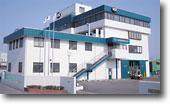Both Porous Electroforming and Super Porous Electroforming offer high reproducibility
Konan Tokushu Sangyo holds the patents for its unique Porous Electroforming and Super Porous Electroforming that can add value to items formed from plastic by opening usually non-existent holes in nickel electroforming dies. A die made through using porous electroforming has pores ranging from 0.05 to 0.15 millimeters in size. High reproducibility is obtained by placing a sheet of material on the die and then vacuum forming it to the die using these pores. This technology allows plastic items to be formed on a female die using a recyclable olefin resin sheet material instead of molding with the more commonly used vinyl chloride powder slush. Super Porous Electroforming enables mirror-like finishes because of its nano-class reproducibility.
In addition to Porous Electroforming and Super Porous Electroforming, the company has added the following five technologies in the quest to be No. 1 in the world: 1. Leather wrapping; 2. Perforated Electroforming; 3. Mesh Electroforming; 4. Mesh electroformed piping; and 5. Ultra-high Precision/nano-processing Reproducibility Electroforming. The high-quality dies are used by automotive parts' manufacturers in Japan and overseas, where they have earned a solid reputation for the manufacture of interior and other parts.
Konan Tokushu Sangyo will continue to propose systems to include our manufacturing technology and know-how that combines machines, molds and materials with the quality control factors of temperature, voltage and amperage. One example of this is the use of our mesh electroformed piping technology that circulates 320?C oil in the die and spins it like a gyroscope. This is called Gyro Space. Injected with resins such as polycarbonate, this achieves complex shapes that cannot be attained with conventional blow molding.
Konan Tokushu Sangyo has also entered into the field of optics by establishing a precision division and building a dedicated factory. Using ultraprecise NC machine equipment and the experience it has nurtured over the years in the field of ultra-precise electroforming technology, production has started for the prototype work for diffusers (devices that scatter the light from a light source) and optical waveguides (parts that illuminate LCD screens on cellular telephones).

